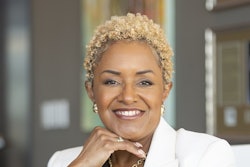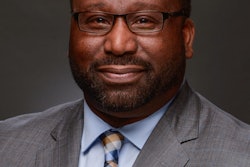The Changing Face of Journalism
The business climate affecting journalism has radically changed over the years. Mergers between entertainment companies and news organizations have contributed to what many journalists see as an erosion of seriousness in the news media. Even the senior journalists at the conservative Wall Street Journal have urged resistance to media mogul Rupert Murdoch’s attempts to purchase the paper for fear of the sensationalistic, tabloid-style changes that Murdoch’s News Corporation might bring to the publication.
And as news organizations take measures to remain competitive and profitable, there are concerns among minority journalists that media outlets will abandon their commitments to diversity or, at the very least, make it less of a priority.
In “Media Matters,” five journalists, including Ken Cooper and Reginald Stuart, weigh in on this issue and others, from the impact of media consolidation to the coverage of minorities.
And as the industry changes, the skills that the new generation of journalism professionals will need are changing as well. As a result, many journalists and journalism educators are feeling the pressure to learn and teach how, for example, to incorporate audio and video into online news reports. Some journalists are heading to graduate school to learn the emerging technologies, and educators are flocking to journalism institutes like Poynter so they can better equip their students to have all the in-demand skills. But for journalists who are not tech savvy, have no fear, at least not yet.
Pearl Stewart reports in “Manic Over Multimedia” that editors and recruiters say that although technical skills are a plus, “traditional” journalists are still in demand.
The country’s changing demographic landscape is also fueling a change in consumer demands. With the growing Hispanic population in the United States, there is a market not only for Spanish-language programming, but also for journalists who can intelligently and respectfully cover Spanish-speaking communities. Contributing editor Dina Horwedel reports in “Responding to a Growing Market” about the newly launched minor in Spanish-language journalism that California State University-Northridge hopes will assist aspiring journalists in improving the coverage of these communities.
Senior writer David Pluviose in “Time Out” speaks to Black sports reporters and editors about the coverage of Black athletes. Does the fact that the majority of sports writers and editors are non-minority play a role in the often-negative coverage of Black sports figures? As David reports, many Black sports journalists find themselves sounding a cautionary tone about rushing to judgment when reporting stories involving Black athletes.
Last, but certainly not least, senior writer Ronald Roach interviews CNN White House Correspondent Suzanne Malveaux about how higher education helped shape her journalism career. In “The Making of Malveaux,” Suzanne offers to young journalists what I think is great advice for all professionals: “You don’t have to be fearless
during your whole career. But I think there’s a time when you have to really seize the opportunity and just go for it. Be fearless in your pursuit.”
Hilary Hurd Anyaso
Editor
© Copyright 2005 by DiverseEducation.com


















